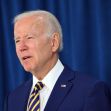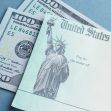You go to college, study hard, and get a shiny new degree that you frame and hope to post on your office wall. You land your dream job and everything is great for a while. But then tragedy strikes. You get sick or have an accident and must stop working. How can you afford to live? And how can you repay your student loans? The Biden Administration has just announced a $5.8 billion rescue plan for you and 323,000 others in similar circumstances.
This announcement brings Biden’s total student loan debt cancellation to $8.7 billion. Although the President has been urged by many progressive groups and fellow Democrats to wipe out the crippling debt completely, Biden has instead enacted cancellations that target specific groups. The August 18 announcement is for one of the neediest of them--those with severe mental or physical disabilities that impair their ability to work.
President Biden announced the elimination of federal student loan debt through the Total and Permanent Disability (TPD) Discharge Program on August 18. Beginning in September, students with physical or psychological impairments who cannot work will have their federal student loans canceled. To qualify, they must match current Social Security Administration data.
A press release from the U.S. Department of Education (DOE) also announced that the Department will stop asking TPD borrowers to provide information about their earnings. This process, they explained, often results in “the reinstatement of loans if and when borrowers do not respond. In addition, DOE will “pursue the elimination of the three-year monitoring period” that is currently required.
U.S. Secretary of Education Miguel Cardona praised this elimination of “red tape.” His prepared remarks describe a landmark change in TPD administration, which currently requires disabled borrowers to submit formal applications that are often challenging for those with health issues to complete. Many others might not have known they are eligible. The Social Security Administration earlier identified hundreds of thousands of disabled, eligible borrowers, and they shared their information with DOE. But DOE did not take any action until Biden’s new announcement.
Cardona said, "Today's action removes a major barrier that prevented far too many borrowers with disabilities from receiving the total and permanent disability discharges they are entitled to under the law." He said "From day one, I've stressed that the Department of Education is a service agency. We serve students, educators, and families across the country to ensure that educational opportunity is available to all.” Since 2019, a similar process has been available only to veterans who match data from the U.S. Department of Veterans Affairs.
Authorizing the elimination of student debt for those with long-term TPD is a landmark change in the program. Currently, to get a student loan discharged, borrowers have to submit formal applications, which can be challenging for those with health issues to complete.
Student debt is a major national problem. At the end of last year, approximately 165 million students owed more than $1.7 trillion according to the Federal Reserve bank. About 43 million of them have federal student loans. The remainder have private student loans, for which the federal government has no power to issue relief. The average student owes $32,731. The government estimates that only a quarter of the undergraduates who take out loans will pay them back in full.
DOE’s August 19 announcement is the latest in a series of student loan forgiveness steps that the Biden Administration has enacted since taking office. He discharged another $8.7 billion in student loans for approximately 455,000 borrowers who lost their loan forgiveness for a number of reasons and has extended the “pause” on repayments, interest and collections until January 2022.
In addition, the Biden Administration canceled $500 million in debt last January through the Borrower Defense to Repayment Program. This program, which was established under the Obama administration, forgave loans to students who were “misled, defrauded, or otherwise harmed by predatory colleges and universities, many of which were for-profit schools. Former DOE Secretary Betsy DeVos had “substantially weakened available relief,” according to Forbes.
Biden now continues to review the legality and fairness of additional student loan forgiveness strategies. It is unclear whether he can use his executive authority to cancel this debt. Nancy Pelosi, Speaker of the House, doesn’t think so. The President has asked Congress to enact legislation that he will sign. Some observers believe he will support $10,000 in repayment for all federal borrowers, an amount that Nerdwallet says will be enough to wipe out debt completely for nearly 15 million borrowers or about a third of those in debt to the federal government.
Senators Elizabeth Warren and Chuck Schumer, along with 17 state attorneys general, want to cancel $50,000. In April, 416 different organizations called for Biden to wipe out student debt completely. Biden’s Press Secretary Jen Psaki “stopped short of promising action by executive order.” For now, disabled Americans can breathe easier, while the fate of relief for others is still open to question.






